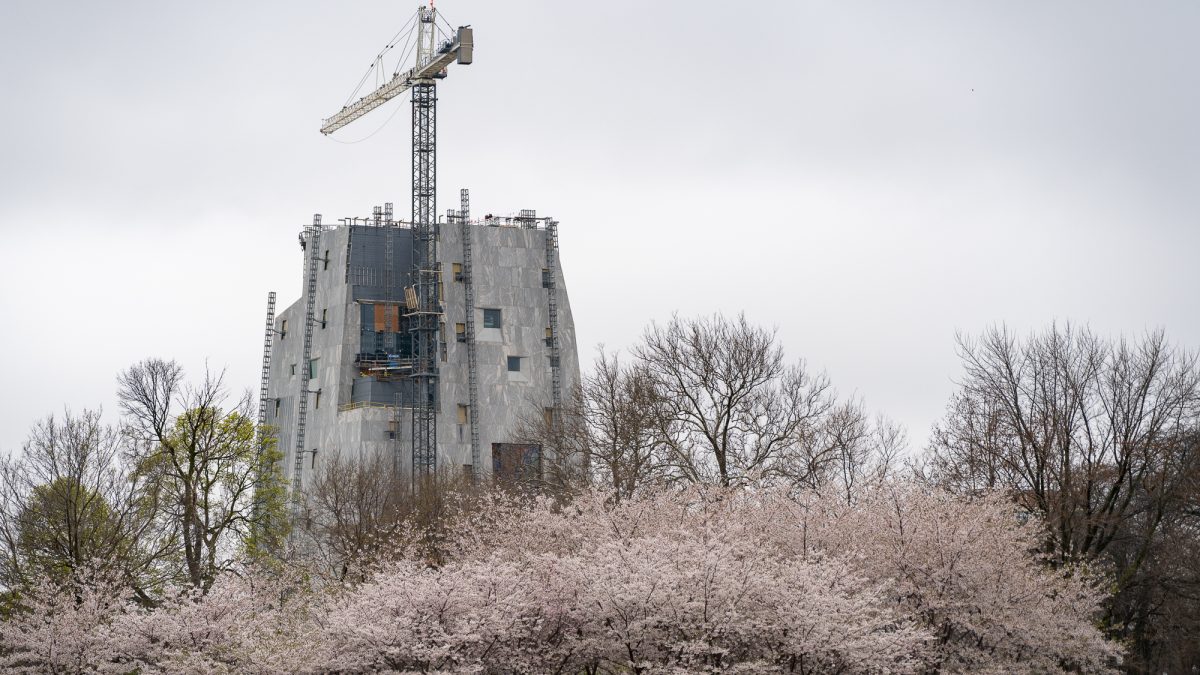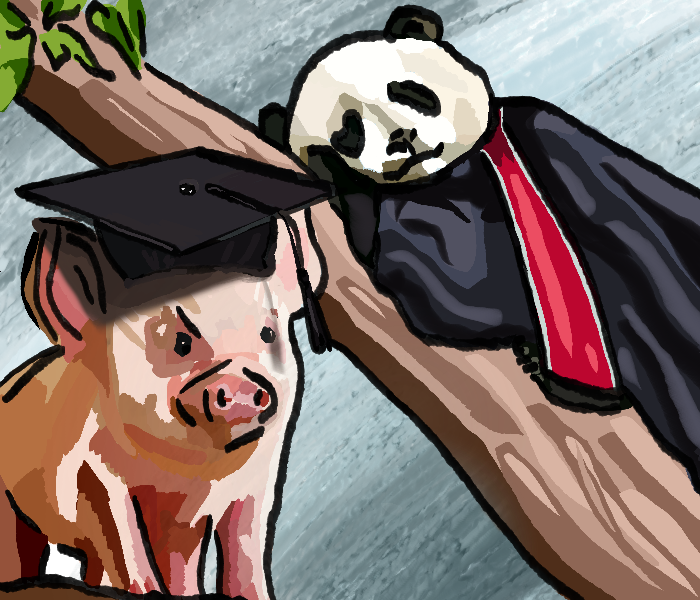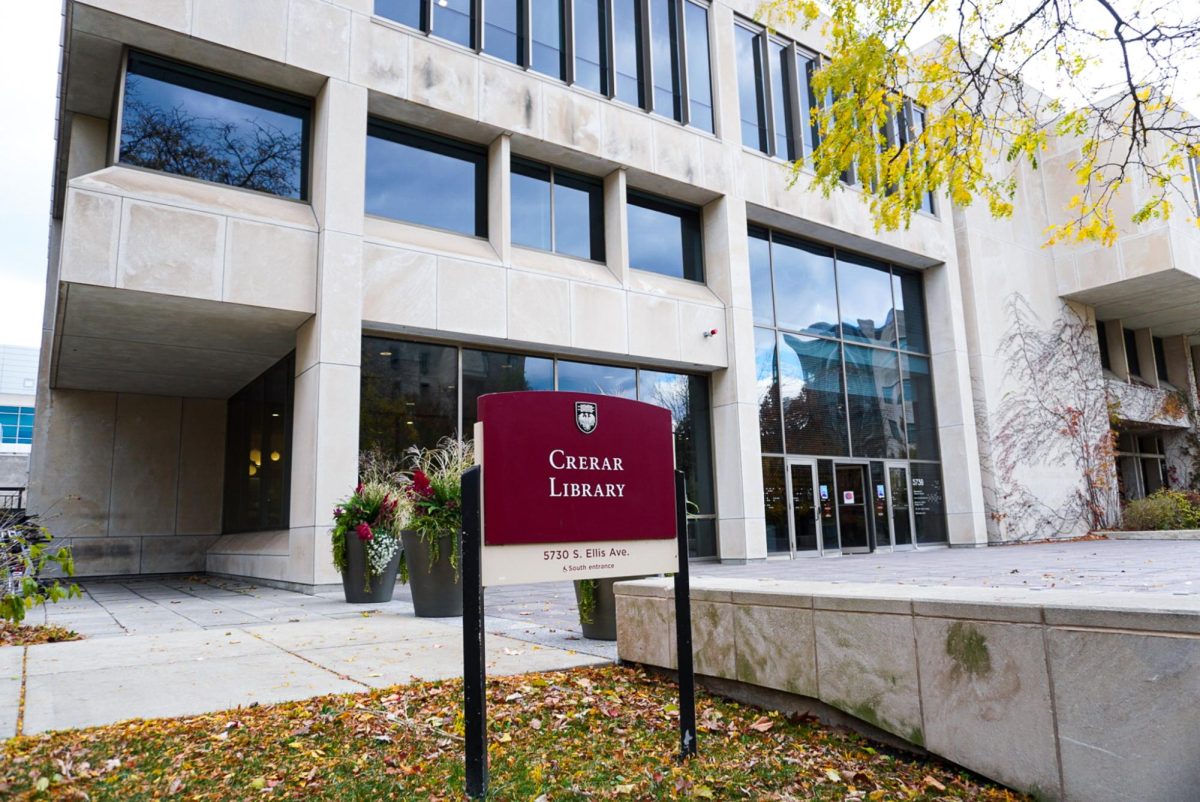Urban Oasis or Science Project? I’m speaking, of course, about Botany Pond, that quaint little in-ground fish tank over by Hull Gate. Now it doesn’t rival the Gulf of Mexico, nor does it evoke the Mighty Mississippi. It’s even smaller than most suburban swimming pools. But all of those things are far away while Botany Pond is right here, and you can learn a lot just by watching carefully.
There are usually some turtles sunning themselves in the reeds or bobbing around the edges of the pond. Two of the turtles were put there in May of 2000. Some kids from a local nursery school found one in the yard behind Jimmy’s and figured that Botany Pond would be a better home. They got a female turtle to go with him and threw both of them in the pond. Unfortunately, this trick only works for turtles. If you pass out behind Jimmy’s, no one will find you a mate and throw the two of you in Botany Pond. Too bad, huh?
Every year that I’ve been here, there has been a family of Mallard ducks that mates in the pond. For the most part, this is really great fun-we all get to watch as the ducklings grow. At first they are fuzzy little things, straight out of a children’s book, afraid to stray from mama’s side. They grow and get braver, eventually learning to beg Doritos on their own, instead of just following their mother around and mooching her Doritos. Their feathers come in and you can start to differentiate the males from the females. When they are adults, the males or “drakes” are the ones with the shiny green or blue head and stripes on their wings. The females or “hens” are browner and less flashy. This is generally true of birds: males are colorful, females are brown. One day those ducks were suddenly gone, off to populate a golf course water hazard somewhere.
Of course the pond also features a lesson in nature’s cruel logic. If you observe the ducklings frequently, you will notice that, at first, there are maybe ten or twelve. Then nine. Then eight. Then maybe six. I’ve never seen one of them meet its fate, but I imagine that neighborhood cats are the primary cause.
Sometimes it’s much more violent and dramatic. Two years ago, there were three drakes and only one hen. She hatched a brood, and one of the drakes, jealous that they weren’t his, pecked all of the hatchlings to death so that the hen would mate with him instead. And you thought your boyfriend was a jerk. I guess his plan worked, since a new brood appeared a few weeks later, and they didn’t get pecked. I guess the moral of the story is that nature isn’t a Disney special where all the animals sing happy songs together.
This year I plan to spend some time hanging out at Botany Pond practicing my duck calls. I hope that learning to talk to these critters will make me a better hunter when fall comes and I find myself in a duck blind up at Fox Chain O’ Lakes. In the meantime, it will be fun talking to the ducks; they can tell me about all of the craziness they see near the Pond when the sun goes down.
Then there are the fish. They are nothing special-just a bunch of goldfish (carp). They are no good to eat, and fishing in Botany Pond isn’t allowed anyway. I have these recurring fantasies about stocking Botany Pond with a half dozen catfish, waiting a year, and then fishing for them at midnight under a full moon. This will probably never happen, but it’s a nice thought.
So there you have it, a microcosm of the natural world, complete with birth, death, predators, competition for mates, and even migration. When you need a break from Marxist postmodern feminist theories about neutrinos, just go to Botany Pond and get a little glimpse of how the real world works.






